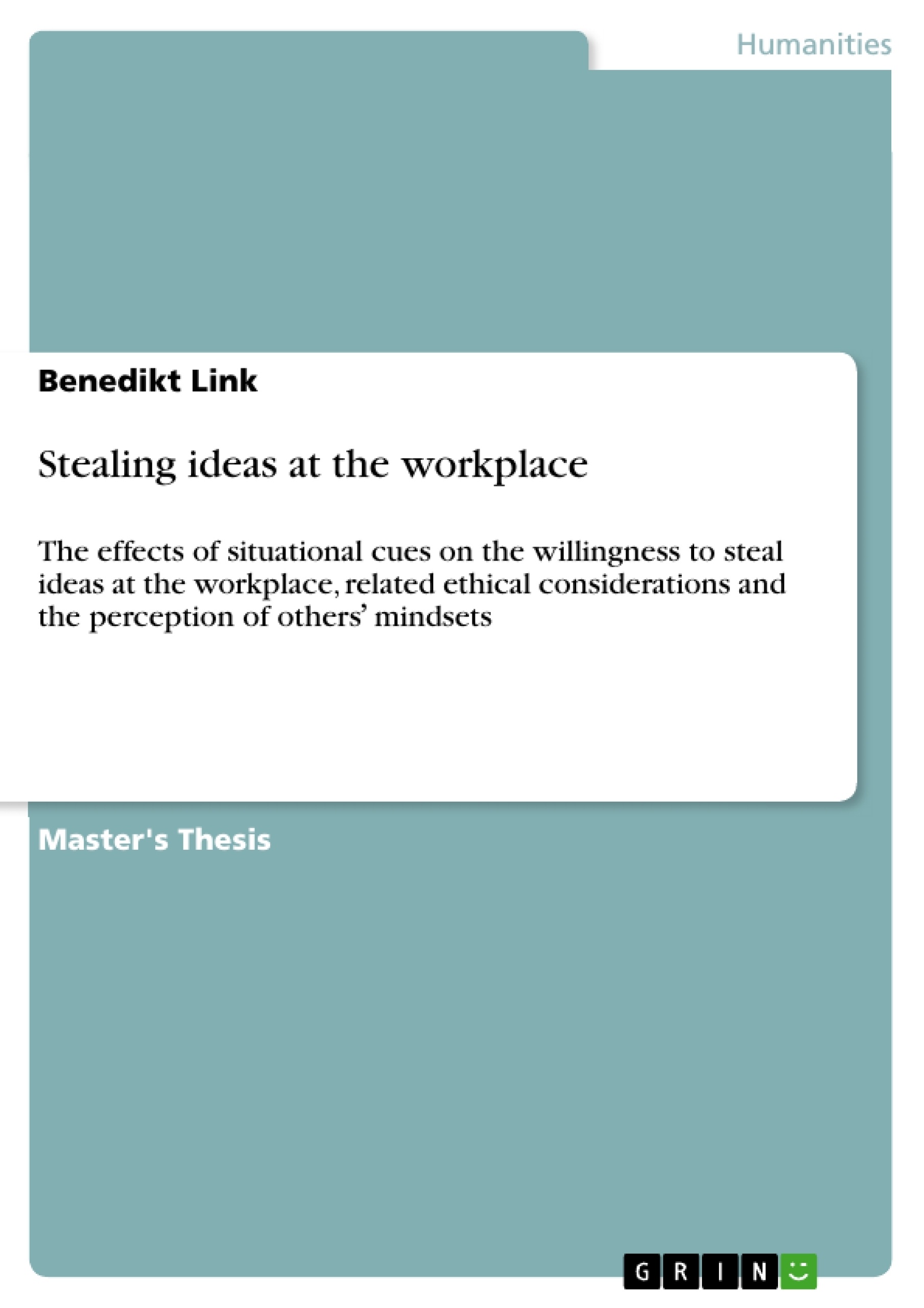This study aims to show that situational cues like semantic primes are able to influence a
participantʼs decision-making in the context of taking credit for someone elseʼs idea at the
workplace. In a laboratory experiment either a competitive, cooperative or neutral
environment was simulated by using subliminal priming techniques. Participants were then
exposed to a hypothetical scenario in which they were urged – due to their heavy workload –
to take credit for a colleagueʼs idea. In particular, the study examined four constructs: the
participantsʼ willingness to take credit for this idea without and with escalating consequences
for not choosing to do it, the perceived ethical costs related to that action and the perception
of others mindsets. It was expected that participants in the competitive condition would be
more willing to take credit for the colleagueʼs idea and perceive less ethical costs than in the
neutral condition and vice versa for the participants in the cooperative condition. Additionally,
the study expected the participants to perceive the mindset of a random other in the same
situation to be similar to their own mindset. Furthermore, qualitative data was collected to
explore the decision-making process in such a situation. The results showed that situational
cues did not significantly influence the individual decision-making in this particular context.
However, several unexpected findings about the relationships between the tested constructs
deliver valuable implications for future research on the topic of taking credit for other peopleʼs
ideas. In addition, the findings from the qualitative analysis suggest that future studies have
to differentiate between ethical and utilitarian considerations to gain further insights into the
individual decision-making process.
Inhaltsverzeichnis (Table of Contents)
- ABSTRACT
- TABLE OF CONTENT
- 1. INTRODUCTION
- 2. THEORY AND HYPOTHESES
- 2.1 The role of subliminal priming
- 2.2 Willingness to take credit without and with escalating severity of consequences
- 2.3 Perceived ethical costs
- 2.4 Perception of others’ mindset
- 3. METHODOLOGY
- 4. RESULTS
- 4.1 Quantitative results
- 4.2 Qualitative results
- 5. DISCUSSION
- 6. LIMITATIONS
- 7. CONCLUSION AND IMPLICATIONS
Zielsetzung und Themenschwerpunkte (Objectives and Key Themes)
This study investigates the influence of situational cues on an individual's decision to take credit for someone else's idea at the workplace, particularly in competitive and cooperative environments. The primary goal is to demonstrate the impact of subliminal priming techniques on individuals' decision-making processes and their perception of ethical costs.- The role of subliminal priming in shaping work behavior
- The impact of competitive and cooperative environments on taking credit for ideas
- Ethical considerations and perceived costs associated with idea theft
- The perception of others' mindsets in relation to situational cues
- Individual reasoning behind decisions regarding idea theft
Zusammenfassung der Kapitel (Chapter Summaries)
- Introduction: This chapter introduces the topic of idea theft in the workplace, highlighting the increasing value of ideas in a knowledge-driven economy. It draws upon existing research on knowledge sharing and competitive environments, outlining the potential motivations for taking credit for someone else's idea.
- Theory and Hypotheses: This chapter explores the theoretical framework underpinning the study. It delves into the concept of subliminal priming and its potential to influence behavior, particularly in ambiguous situations. It also examines the impact of competitive and cooperative work environments on individuals' willingness to take credit for ideas and their perceived ethical costs.
- Methodology: This chapter outlines the design and procedure of the laboratory experiment conducted. It details the recruitment of participants, the priming techniques used, and the measures employed to assess the dependent variables. It also explains the coding strategy for analyzing qualitative data.
- Results: This chapter presents the findings of the quantitative and qualitative analyses. It discusses the rejection of the initial hypotheses and explores unexpected findings regarding the relationships between the tested constructs. It also highlights significant themes emerging from the qualitative data analysis, such as individual-level considerations, victim and group-level concerns, and normative considerations.
- Discussion: This chapter interprets the findings, exploring potential reasons for the rejection of the hypotheses. It considers the influence of control variables, potential flaws in the priming procedure, and other possible explanations. It also analyzes the inter-scale effects observed and the implications for understanding idea theft behavior.
- Limitations: This chapter acknowledges the limitations of the study, including the sample size, the use of a hypothetical scenario, and the lack of certain personality measures.
Schlüsselwörter (Keywords)
This study centers on the themes of workplace ethics, idea theft, subliminal priming, competitive and cooperative environments, ethical decision-making, and individual reasoning. It delves into the psychological and social factors that influence an individual's willingness to take credit for someone else's idea.- Arbeit zitieren
- Benedikt Link (Autor:in), 2011, Stealing ideas at the workplace, München, GRIN Verlag, https://www.grin.com/document/215541



